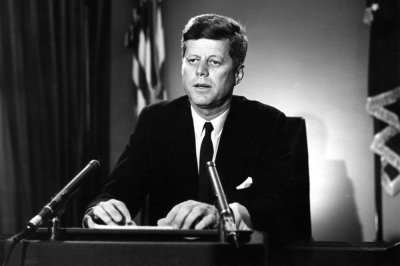Topic: Niels Bohr
Niels Henrik David Bohr (Danish pronunciation: ; 7 October 1885 – 18 November 1962) was a Danish physicist who made fundamental contributions to understanding atomic structure and quantum mechanics, for which he received the Nobel Prize in Physics in 1922. Bohr mentored and collaborated with many of the top physicists of the century at his institute in Copenhagen. He was part of a team of physicists working on the Manhattan Project. Bohr married Margrethe Nørlund in 1912, and one of their sons, Aage Bohr, grew up to be an important physicist who in 1975 also received the Nobel prize. Bohr has been described as one of the most influential scientists of the 20th century.
Bohr was born in Copenhagen, Denmark, in 1885. His father, Christian Bohr, a devout Lutheran, was professor of physiology at the University of Copenhagen (it is his name which is given to the Bohr shift or Bohr effect), while his mother, Ellen Adler Bohr, came from a wealthy Jewish family prominent in Danish banking and parliamentary circles. His brother was Harald Bohr, a mathematician and Olympic footballer who played on the Danish national team. Niels Bohr was a passionate footballer as well, and the two brothers played a number of matches for the Copenhagen-based Akademisk Boldklub, with Niels in goal. There is, however, no truth in the oft-repeated claim that Niels Bohr emulated his brother Harald by playing for the Danish national team.
In 1903 Bohr enrolled as an undergraduate at Copenhagen University, initially studying philosophy and mathematics. In 1905, prompted by a gold medal competition sponsored by the Royal Danish Academy of Sciences and Letters, he conducted a series of experiments to examine the properties of surface tension, using his father's laboratory in the university, familiar to him from assisting there since childhood. His essay won the prize, and it was this success that decided Bohr to abandon philosophy and adopt physics. As a student under Christian Christiansen he received his doctorate in 1911. As a post-doctoral student, Bohr first conducted experiments under J. J. Thomson at Trinity College, Cambridge. In 1912 he joined Ernest Rutherford at Manchester University and he adapted Rutherford's nuclear structure to Max Planck's quantum theory and so obtained a theory of atomic structure which, with later improvements, mainly as a result of Heisenberg's concepts, remains valid to this day. On the basis of Rutherford's theories, Bohr published his model of atomic structure in 1913, introducing the theory of electrons traveling in orbits around the atom's nucleus, the chemical properties of the element being largely determined by the number of electrons in the outer orbits. Bohr introduced the idea that an electron could drop from a higher-energy orbit to a lower one, emitting a photon (light quantum) of discrete energy. This became a basis for quantum theory. After four productive years with Ernest Rutherford in Manchester, Bohr returned to Denmark becoming in 1918 director of the newly created Institute of Theoretical Physics.
It uses material from the Wikipedia article "Niels Bohr."













